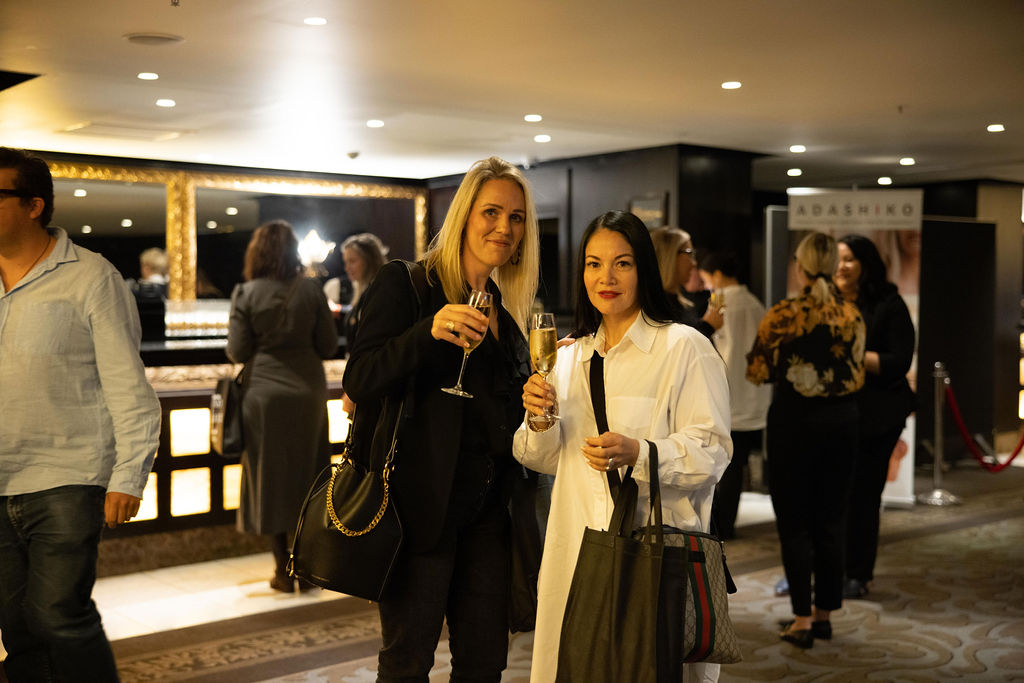Ep.105 – How Solving Our High Asthma Rates Starts at Home
[podcastfooter]
We might not think of it as a big deal when compared with more urgent diseases or medical conditions, but asthma has become a concerningly significant presence in Kiwis lungs. How has this happened? Well, Asthma NZ CEO Katheren Leitner broke down the causes, effects and what we need to do to turn the tide in a powerful keynote at our M2 Summit on Thursday 20 May.

Leitner began her keynote by referencing a goal she set her organisation when entering the role of CEO; to reduce respiratory related hospitalisations by 50% by the year 2029. However, she revealed that she quickly learned of a fundamental problem that would make this essentially unattainable, which she described as “like hitting a brick wall”; the state of housing in New Zealand.
She presented the audience with a few concerning statistics and statements about the state of respiratory health and knowledge in New Zealand. She revealed that 1 in 5 New Zealanders live with a respiratory condition, and that 1 in 8 people live with a condition they are unaware they have. She revealed that New Zealand has the second highest prevalence of asthma in the world. When diagnosing the causes for this unfortunate statistic, Leitner pointed to a few factors, including our natural environment with highly pollenous native fauna and our general apathy and ignorance to our own general health.
But the key factor in our shockingly high rates, according to Leitner, is our housing. She cited another troubling statistic, that 53% of New Zealand houses do not meet healthy home standards. As an example of how this problem been normalised, she referred to a few commonly shared experiences of growing up in a Kiwi home, recalling “In winter, when I got home from school, having to put more clothes on indoors than outdoors was normal! Because that’s what you did” before pointing out how this experience is not shared by those from Europe whose houses are more competently build. She asserted that the housing issue is so impactful, until it is drastically improved, their 50% hospitalisations goal is essentially impossible, comparing it to “like trying to fill up a bathtub without a plug in it.” She pointed out that this is not exclusive a modern problem in this country and that New Zealand has been flagged by the World Health Organization since the 1980’s for our unsafe housing.

Leitner then recounted a sobering personal account of a family whose children were suffering chronic respiratory illness and other health issues, in part due to a staggering 90% relative humidity rate found in one of their rooms, yet the house actually passed the national building code standards. She used this as a clear example of the need to immediately make changes to our building code, which she asserted allowed us to exist as “a first-world country with third-world houses”. Leitner encouraged the audience to pay more attention to the state of their own homes and called for the housing industry to “Tesla our homes… turn it into a smart device”.

Finally, Leitner brought us back out to consider how the consequences of our high asthma rates impact us day-to-day. She cited a statistic which claimed asthma lowers work productivity, heavily effects children’s ability to keep up in school and discourages people both young and old from physical activity. With the needed area of improvement clearly identified and the realities of New Zealand’s housing deficiencies becoming louder and harder to ignore, Leitner said will continue to lobby on behalf of asthma sufferers everywhere and fight for the legislative change she needs for Asthma NZ to hit its 50% target. For now, she left the audience stating that we must stay optimistic about the future, because “otherwise, we will leave an even bigger mess for future generations”. She concluded with a provocative message for the audience to mull over; “nothing else matters, when you can’t breathe”.
[videofooter]









